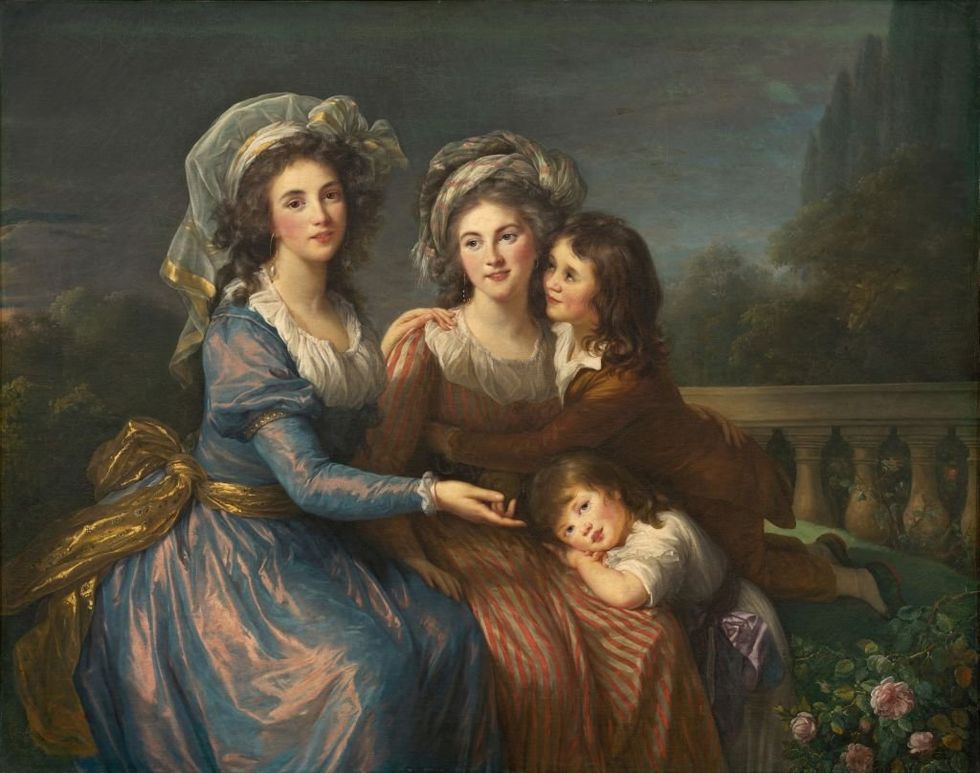
www.theblaze.com
Making motherhood into high art
Most women assume that balancing motherhood and a professional career is a modern challenge, but that’s not quite right.Meditations on this theme reach back to classical antiquity. Some prominent women, such as Cornelia (mother of the Gracchi brothers), are recorded as virtuous exemplars. Others, such as Livia (wife of the Emperor Augustus) are remembered for scheming and treachery on behalf of their children. The French portraitist Élisabeth Louise Vigée-Le Brun (1755-1842), took this to a new level by making motherhood the centerpiece of her professional identity as an artist.For all of us who are trying to achieve that elusive “life-work balance,” it can be comforting to realize it was as much a challenge in the 18th century as it is today.Vigée-Le Brun was a pioneering woman in a field that had been historically dominated by men. In the Renaissance, however, some female artists had started to break through, and by the time of the French Enlightenment, a number had become international celebrities.Vigée-Le Brun’s father, Louis Vigée, was also a portraitist, so she had access to the technical artistic training that was denied to so many women at the time. Although he died when she was young, she recorded in her memoirs, or “Souvenirs,” that Louis was the first to recognize her skill and proclaim her future as an artist. As she matured, Vigée-Le Brun developed a close relationship with Marie Antoinette and attempted to rehabilitate the unpopular queen’s public image through official portraits with her children, which were supposed to give an informal, humanizing impression of the monarch.Unfortunately for Marie Antoinette, who was guillotined during the French Revolution, it would have taken much more than a portrait to save the monarchy. But Vigée-Le Brun survived and even thrived as an artist and began to make a specialty of self-portraits to shape her own image.In our selfie-obsessed age, it may come as a surprise that self-portraiture is itself a relatively recent phenomenon, dating back to 16th-century Europe. Indeed, there is no equivalent either in the ancient world or in any other tradition. For the West, however, it became an established genre of interest not only to the artists themselves but also to collectors.Vigée-Le Brun married the collector and art dealer Jean Baptiste Pierre Le Brun (1748-1813). He was related to Louis XIV’s favored painter Charles Le Brun — so the very addition of her husband’s surname would have added to Louise’s artistic pedigree. Husband and wife would wind up on opposite sides of the gathering revolution, and their marriage ended in divorce in 1794, but they did have one child, Jeanne Julie Louise Le Brun (1780-1819).
Print Collector/Getty ImagesAs Jeanne grew older, Vigée-Le Brun captured herself and her daughter in a close embrace for self-portraits. The images of the two of them together were designed to sentimentally tug at the heartstrings of viewers, while at the same time to impress them with the skill of the painter who was simultaneously participant in — and recorder of — the tender, intimate scene between mother and child.For the first time, the role of the artist as mother was not the stuff of the nursery or boudoir but rather the subject of important, high-end oil paintings sold in a fashionable gallery to aristocratic collectors. “Brunette,” as Jeanne was known, stayed with her mother after her parents’ divorce and showed artistic promise of her own — at least according to her mother’s memoirs. The relationship between Louise and Jeanne was not always smooth, but their legacy of turning motherhood — particularly of daughters — into a central pillar of artistic identity was groundbreaking.As both a mother and a professional, I have always found Vigée-Le Brun’s navigation of the treacherous waters of her career, tumultuous political events, and motherhood in a world not very welcoming to women fascinating. For all of us who are trying, however imperfectly, to achieve that elusive “life-work balance,” it can also be comforting to realize that it was as much a challenge in the 18th century as it is in the 21st.Vigée-Le Brun’s example of a mother fashioning her own identity both from her parent and her child is a wonderful inspiration this Mother’s Day. She established that having children need not negate professional success but rather can be a key component to it. In that spirit, I would like to pay tribute to my mother for inspiring me to tackle both motherhood and career and to thank my children for having given me back so much more than I will ever be able to give them.















